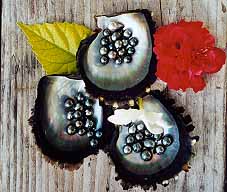Jorune Sakalauskaite PhD thesis
 Proteomic approaches for archaeology and cultural heritage: characterising fossil proteins preserved in biominerals (mollusc shells)
Proteomic approaches for archaeology and cultural heritage: characterising fossil proteins preserved in biominerals (mollusc shells)
Defended on the 22nd January 2020
Funding: Torino university
Supervisors: Frédéric Marin (UBFC) and Beatrice Demarchi (Unito)
Started in November 2017
Abstract
The growing interest of biominerals and the processes underlying their formation have influenced numerous research studies in the last decades, enabling to study our geological environment, evolution and biodiversity. Proteomic approaches have become the base of in-depth studies of biominerals in these organisms, since the complex shell matrix entrapped into the biomineralized carbonate skeleton can reveal many functions and give precious insights into evolutionary processes. Even though biomineral studies gained such great attention in the last decades, too few studies have been conducted on mollusc shell proteins, considering that there are 85,000 recognized living species of highly diverse molluscs: there is a clear gap in the knowledge of the “biomolecular toolkits” of biomineralisation among these organisms. Research on intracrystalline proteins trapped within the calcite crystals has shown that protein sequences can be preserved deep in time enabling the access to hundreds-of-thousand-years old protein structures that can reveal paleobiogeochemical information and help to answer important environmental and archaeological questions.
Mollusc shells found in archaeological sites are the direct evidence of how humans exploited their environment in the past – they represent one of the most widespread and iconic raw materials used in prehistory to make jewelry. The use of certain species and the ornaments’ typology can be used as a proxy for reconstructing patterns of cultural diversity, cohesiveness of local communities and changes in past societies. However, taxonomic identification of shell ornaments among prehistoric artefacts remains challenging. Working the material (e.g. polishing) and/or degradation during burial may have disguised or altered diagnostic morphological features which hampers the building of large datasets of securely-identified ornaments
My research project exploits novel technological advances in biomolecular archaeology (paleoproteomics or “ZooMS”, stable isotope geochemistry) and spectroscopic techniques (for microstructural and morphological studies) to focus on the identification of shells that have been notably important for European prehistory such as Spondylidae, Unionoidae, Nassariidae and many others from Upper Palaeolithic, Mesolithic and Neolithic sites. Using the most recent techniques in proteomics and biomolecular research, an in-depth study of the occluded shell matrix proteins will be carried out. This will give a deeper insight on mollusc shell biominerals to aid the study of conserved biomolecular toolkit responsible for biomineralization processes as well as helping to untangle the complex patterns of human mobility and use of landscape against a changing environmental backdrop during the Pleistocene and the Holocene, revealing possible routes for the exchange of materials and ideas.
Thesis advisory panel
Emmanuel Fara
Matthew Collins
- extrait:
- lien_externe:
- kc_data:
- a:8:{i:0;s:0:"";s:4:"mode";s:0:"";s:3:"css";s:0:"";s:9:"max_width";s:0:"";s:7:"classes";s:0:"";s:9:"thumbnail";s:0:"";s:9:"collapsed";s:0:"";s:9:"optimized";s:0:"";}
- kc_raw_content:
 Proteomic approaches for archaeology and cultural heritage: characterising fossil proteins preserved in biominerals (mollusc shells)
Proteomic approaches for archaeology and cultural heritage: characterising fossil proteins preserved in biominerals (mollusc shells)Defended on the 22nd January 2020
Funding: Torino university
Supervisors: Frédéric Marin (UBFC) and Beatrice Demarchi (Unito)
Started in November 2017
Abstract
The growing interest of biominerals and the processes underlying their formation have influenced numerous research studies in the last decades, enabling to study our geological environment, evolution and biodiversity. Proteomic approaches have become the base of in-depth studies of biominerals in these organisms, since the complex shell matrix entrapped into the biomineralized carbonate skeleton can reveal many functions and give precious insights into evolutionary processes. Even though biomineral studies gained such great attention in the last decades, too few studies have been conducted on mollusc shell proteins, considering that there are 85,000 recognized living species of highly diverse molluscs: there is a clear gap in the knowledge of the "biomolecular toolkits" of biomineralisation among these organisms. Research on intracrystalline proteins trapped within the calcite crystals has shown that protein sequences can be preserved deep in time enabling the access to hundreds-of-thousand-years old protein structures that can reveal paleobiogeochemical information and help to answer important environmental and archaeological questions.
Mollusc shells found in archaeological sites are the direct evidence of how humans exploited their environment in the past - they represent one of the most widespread and iconic raw materials used in prehistory to make jewelry. The use of certain species and the ornaments' typology can be used as a proxy for reconstructing patterns of cultural diversity, cohesiveness of local communities and changes in past societies. However, taxonomic identification of shell ornaments among prehistoric artefacts remains challenging. Working the material (e.g. polishing) and/or degradation during burial may have disguised or altered diagnostic morphological features which hampers the building of large datasets of securely-identified ornaments
My research project exploits novel technological advances in biomolecular archaeology (paleoproteomics or "ZooMS", stable isotope geochemistry) and spectroscopic techniques (for microstructural and morphological studies) to focus on the identification of shells that have been notably important for European prehistory such as Spondylidae, Unionoidae, Nassariidae and many others from Upper Palaeolithic, Mesolithic and Neolithic sites. Using the most recent techniques in proteomics and biomolecular research, an in-depth study of the occluded shell matrix proteins will be carried out. This will give a deeper insight on mollusc shell biominerals to aid the study of conserved biomolecular toolkit responsible for biomineralization processes as well as helping to untangle the complex patterns of human mobility and use of landscape against a changing environmental backdrop during the Pleistocene and the Holocene, revealing possible routes for the exchange of materials and ideas.
Thesis advisory panel
Emmanuel Fara
Matthew Collins
